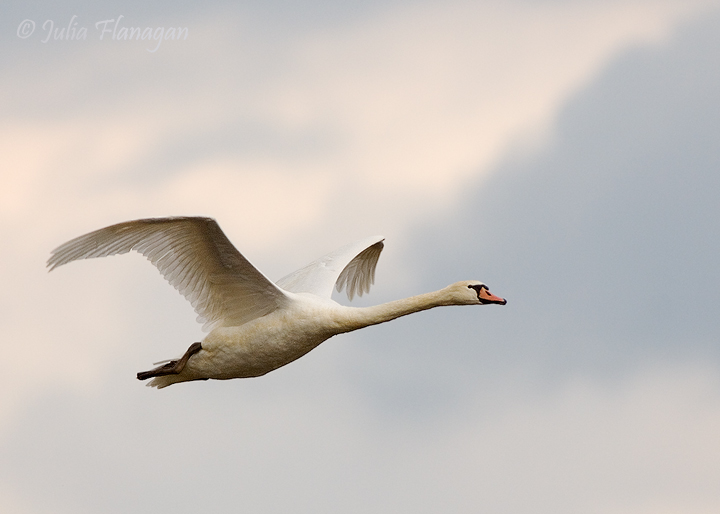|
|
||
|
Mute Swan The Mute Swan, native to much of Europe and Asia, was was introduced to the United States in the late 1800s, primarily for its ornamental value. Recently, it has been widely viewed as an invasive species because of its rapidly increasing numbers and impact on other waterfowl and native ecosystems. The most familiar sound associated with Mute Swan is the vibrant throbbing of the wings in flight once this bird has taken off from the water. Young birds are not the bright white of mature adults, and their bill is dull grayish-black, not orange, for the first year. They are monogamous and often reuse the same nest each year, restoring or rebuilding it as needed. Male and female swans share the care of the nest, and once the young are fledged it is not uncommon to see whole families looking for food. They feed on a wide range of vegetation, both submerged aquatic plants which they reach with their long necks, and by grazing on land. The food commonly includes agricultural crop plants such as oilseed rape and wheat. Feeding flocks in the winter may cause significant crop damage, often as much through trampling with their large webbed feet, as through direct consumption. |
Home | Upcoming Events | About Us | Resource Issues | News | Local Contacts Maps | Photos | Publications | Youth Education | FAQ's | Links | Membership |






